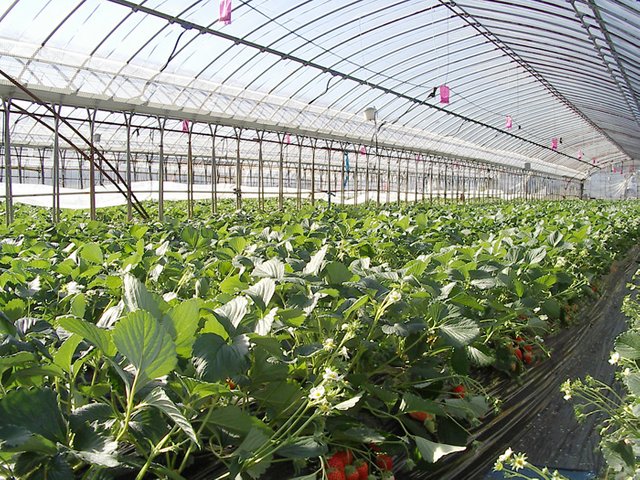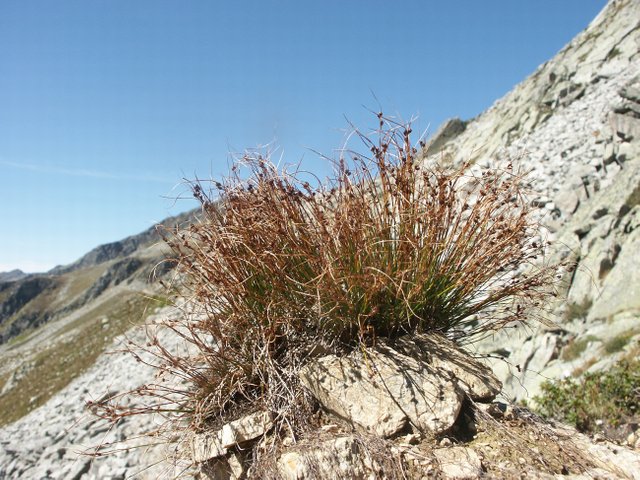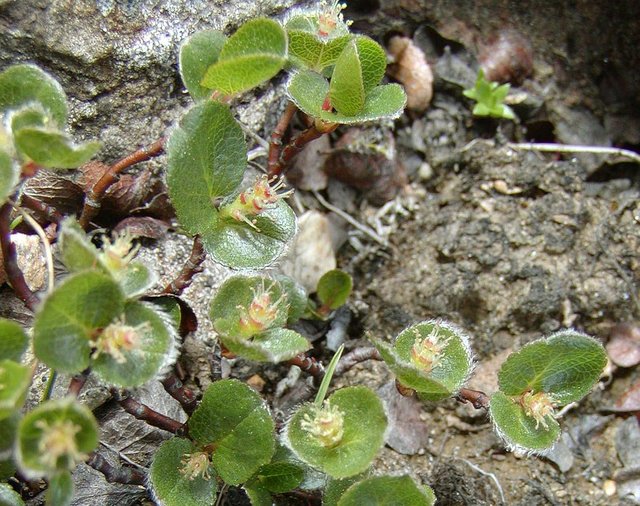Why many plants decide to reproduce asexually
Plants are not like humans when it comes to reproduction. Most plant species has the ability to perform asexual reproduction, which essentially means that it will create a clone of itself. There are lots of strategies plants use to make cloned offspring, such as creating runners (strawberries are a good and common example), onion bulbs or tubers (such as potatoes). These are just some of the most commons one, and there are very many different variations when it comes to making clones.
In this post I want to share some key benefits for asexual reproduction, along with some species that applies this tactic. I hope you enjoy learning a bit about the life of plants.

An image of a greenhouse filled with strawberry plants. Strawberries uses runners to create cloned offspring, so I’m willing to bet every single one of these plants are clones of each other! Image by Moja~commonswiki, posted with the GNU Free Documentation License.
The benefits of reproducing asexually
There are several benefits to using asexual reproduction, and the most common reason is that it is energy efficient. Producing flowers and gametes are very costly in terms of energy investment, and for many plants it just don’t pay off to spend all that energy on reproduction. Instead they can allocate the extra energy they have into growing larger, increasing the root systems or saving resources for winter.
Another good reason as to why a lot of plants reproduce asexually is that only one plant is required. The plant can then fertilize itself, or just produce a clone, and a new one will grow without having to rely on getting its pollen onto another plant of the same species.
At high altitudes and other extreme climates, pollinators can also be a big problem that makes it very difficult to have sexual reproduction. If there are no insects to carry the pollen to other plants, they need to entirely rely on wind, and the odds of the pollen getting to the desired plant is very low.
By reproducing asexually, the plant will inherit every single gene from the parent plant, which might be an advantage, especially if the plant is already well suited to live in the environment it is living in. The plant has obviously managed to grow there, so an offspring with the exact same genes should also be able to accomplish this task.
In addition to the reasons above, there are of course many other variables that can make asexual reproduction more desirable than sexual reproduction, but the energy saving part of it is the most common reason.
As for us humans, the asexual reproduction is really useful, making it easy to cultivate and share plants with other people. A lot of the plants you purchase at stores are clones of another plant, instead of having grown from a fertilized seed.

Juncus trifidus, a gramnoid known to apply asexual reproduction. It is found at high altitudes all over Europe, where it has a very short growth season, few pollinators and a challenging climate. Image by Bernd Haynold, posted with the GNU Free Documentation License.
The downsides to asexual reproduction
Asexual reproduction also has a few problems, the main one being that the new plant is a clone of the parent plant. As said above, this can be really good for stable environments, but without sexual reproduction there will be no natural selection, and plant populations all having 100 % of the same DNA will be extremely risky if climate conditions change.
If all plants have the exact same genes, they might also have a big problem with diseases. If the parent plant is not resistant to a disease or infection, the offspring will also not be resistant to it. If the entire population is clones of each other, none of them will have genes that can save the population from dying to the disease, and the entire population will (in a worst-case scenario) be wiped out.
Another big problem is that the plant cannot spread itself far. Most forms of asexual reproduction leads to offspring that are located very close to the parent plant. Over time the population might grow big, but it is not possible to reach new places the same way pollen might be carried many kilometers away.

Salix herbacea, a plant species commonly found in snowbeds. This means they only have between a few weeks and a couple of months to reproduce before they get snowed in, so they make good use of asexual reproduction. Image by Jgrahn, posted with the GNU Free Documentation License.
How many plants use asexual reproduction?
There are many plants that mostly use asexual reproduction, and there will be more of these in “extreme” climate than in temperate climates. For example, above the tree line in colder parts of the world, most of the plants use asexual reproduction for the most time. This is because they simply do not have time, energy or the pollinators to carry out sexual reproduction. Some species living at high altitude only have a few weeks to complete their life cycle before the ground freezes over, and how could they manage to get enough energy to produce flowers in this short time period?
Sources
I wrote all of it based on my experience from studying plant ecology, and all this information is pretty much common knowledge within this field, so I have no real sources used for this post. However, there is a lot of literature on this subject, and a websearch with the phrase asexual reproduction in plants will be able to confirm all of my information, as well as providing some more.
Thanks for reading
This was a short introduction to how and why plants reproduce asexually. There are books with several hundred pages written about this subject, so if you are interested, there is plenty of opportunities to learn about this adaptation.
If you like posts about nature and biology, make sure to follow me ( @valth ). I try to post as many biology related posts as I manage, and I get very happy when I get more followers!
I also love constructive feedback (both positive and negative), so please comment if you like my post, have a question, or have additional information to supply to the post.
Hello @valth,
Your post has been chosen by the @robinhoodwhale initiative as one of our top picks today.
Learn more about the Robinhood Whale here!
The Steemit community looks forward to more great stuff from you. So, please keep on Steeming!
Goodluck!
~RHW~
Wow, that's great! Thanks :)
The SteemSTEM folks might be interested in this, if you include #steemstem as one of the tags.
I think some plants are very good at wide distribution, even with asexual reproduction. Especially the aquatic plants along rivers and ocean shores. They go all over the place!
I get amazed when I think of some varieties of fruit trees - and how many centuries of cloning (grafting in that case) has happened, to keep those varieties alive. Apples, pears, plums, and more - from the 1500s. That's amazing.
Yea, you are right about the aquatic plants! Those completely slipped my mind when I was writing this.
When it comes to invasive species, those are some of the hardest ones to deal with.
I would imagine that to be correct. We don't really have a big problem with that here in Norway, but I had so much problems getting rid of Lemna minor in my aquarium, so I don't even want to think about being tasked with having to try to get rid of this in a stream of pond!
Aww, just toss that Lemna minor in the nearest creek -- that will take care of your aquarium problem! :P
Haha, that would be going to make a lot of people very angry :)
Fantastic job with this post! Really nice work discussing plants employment of asexual reproduction, and both the advantages and disadvantages of it to the plants! We look forward to your next posts. Thank you for writing quality STEM posts!
As a bonus, and in addition to resteeming for exposure. We are awarding you a small 5 Steem Power deposit as a thank you for creating quality STEM related postings on Steemit. We hope you will continue to educate us all!
https://steemit.chat/channel/steemSTEM
Thank you for the positive feedback, resteem and the Steem Power! I had not heard of this STEEMStem project before, but I'll make sure to check out your posts from now on :)
This post has been ranked within the top 25 most undervalued posts in the second half of Dec 03. We estimate that this post is undervalued by $14.19 as compared to a scenario in which every voter had an equal say.
See the full rankings and details in The Daily Tribune: Dec 03 - Part II. You can also read about some of our methodology, data analysis and technical details in our initial post.
If you are the author and would prefer not to receive these comments, simply reply "Stop" to this comment.
Asexual reproduction is also a strategy that allows some invasive plants reproduction, like Eichhornia crassipes. You have a new follower as I'm also a plant lover! :)
Yea, asexual reproduction can be a big problem with invasive species. Here in Norway we have some invasive plant species such as Reynoutria japonica that cannot have sexual reproduction here due to the climate, but it is still growing out of control in some areas.
Thanks for following me! :)
Great report!,
Thanks so much for sharing!
You're welcome!